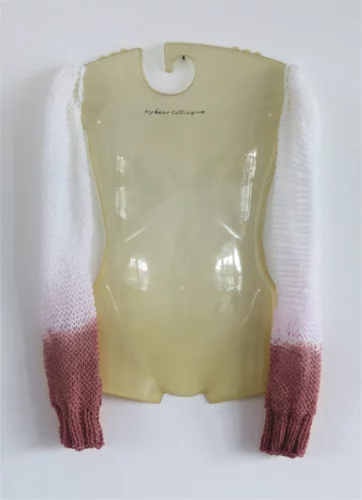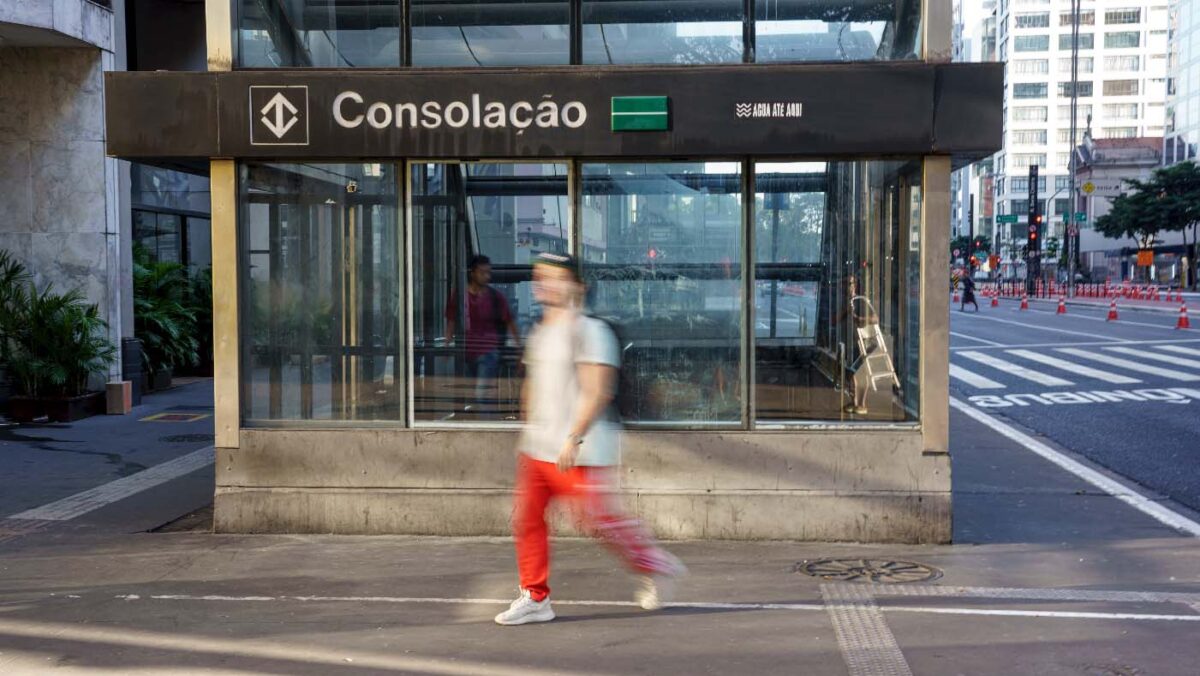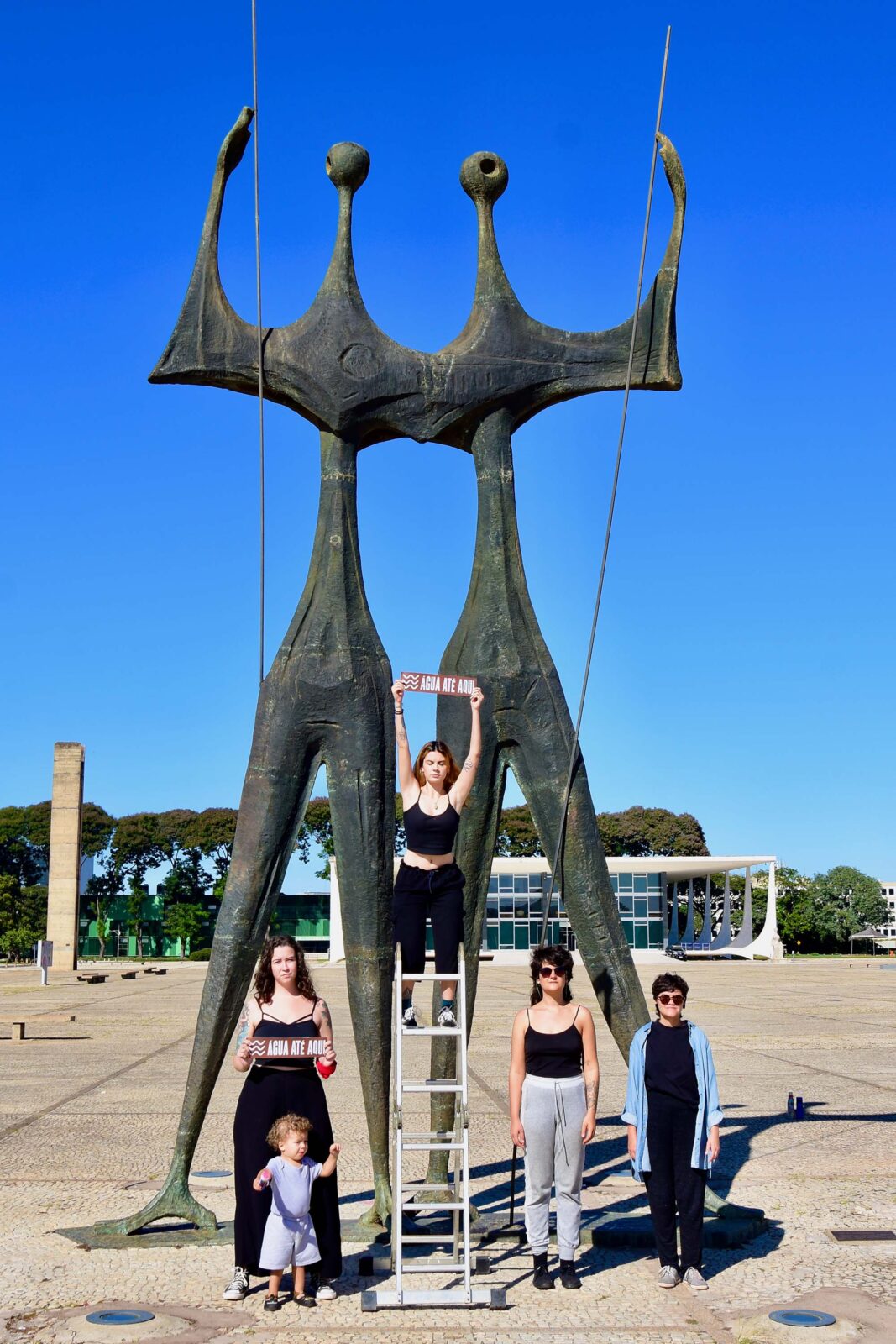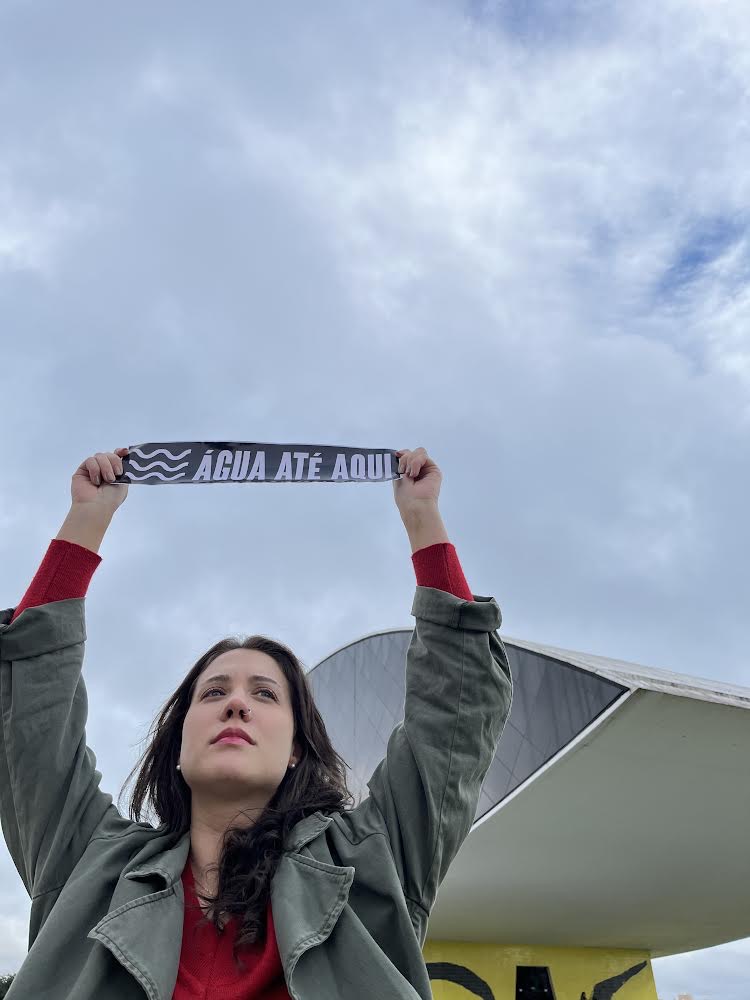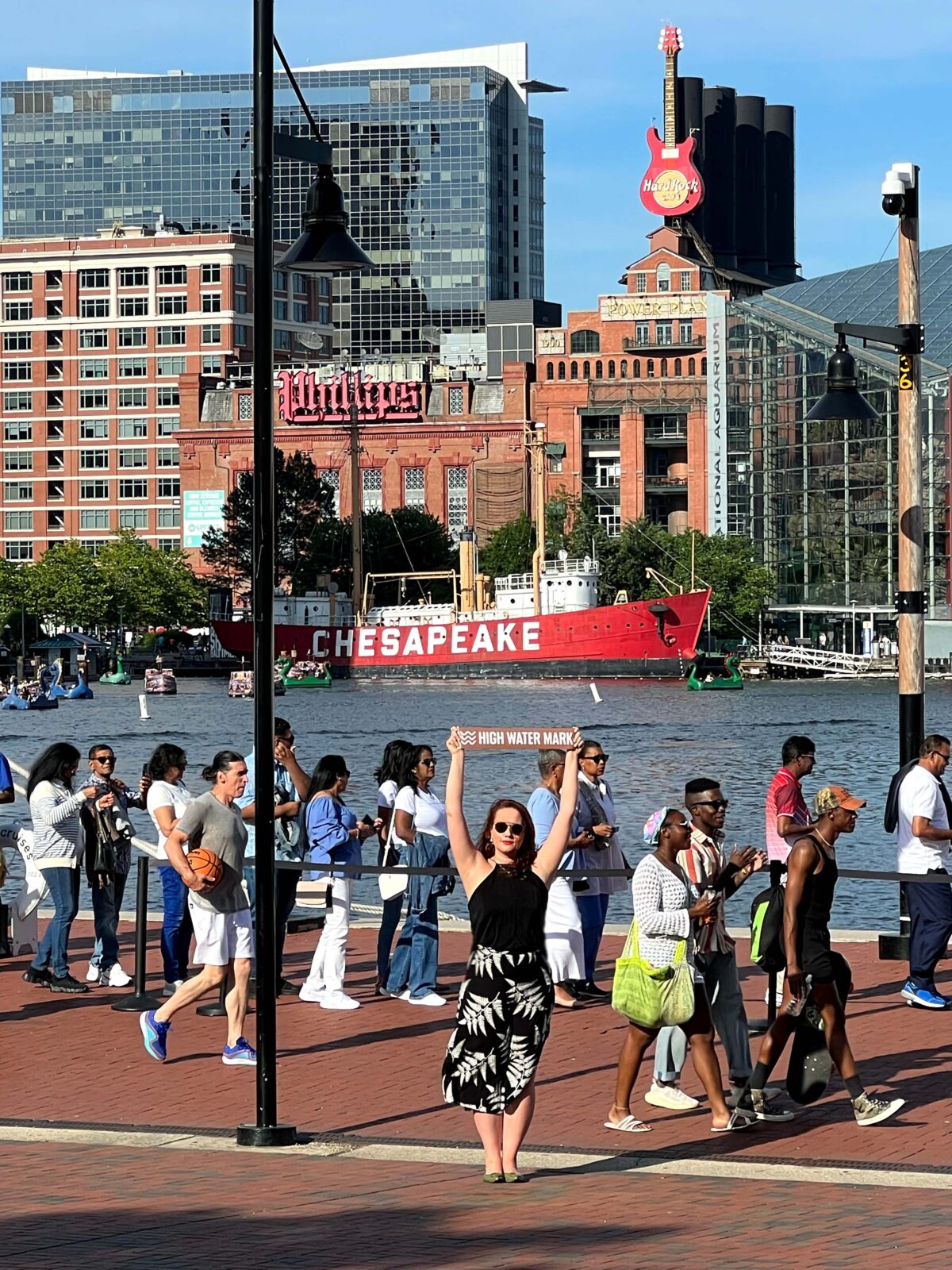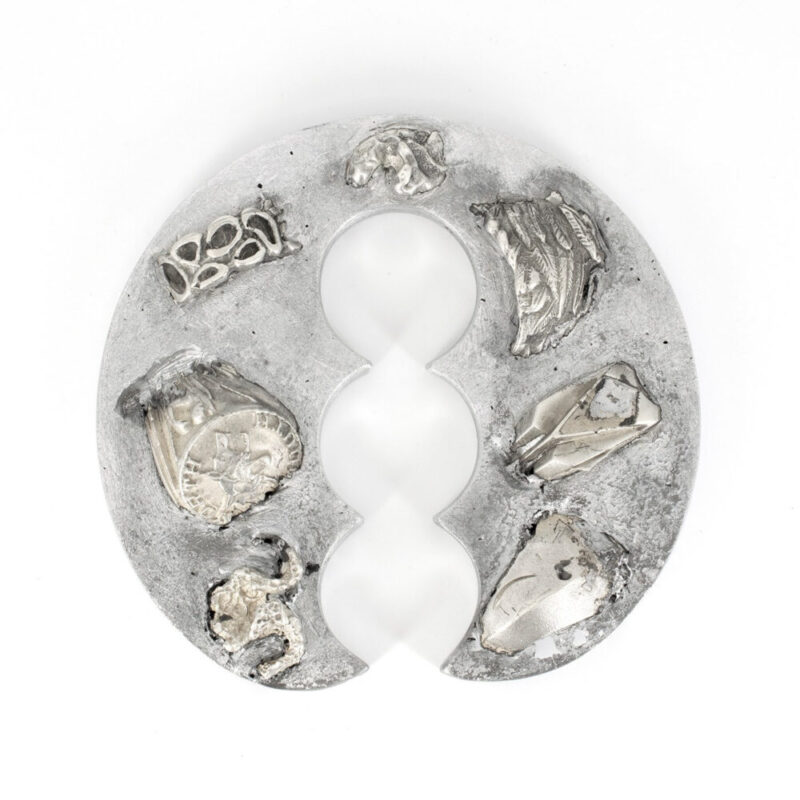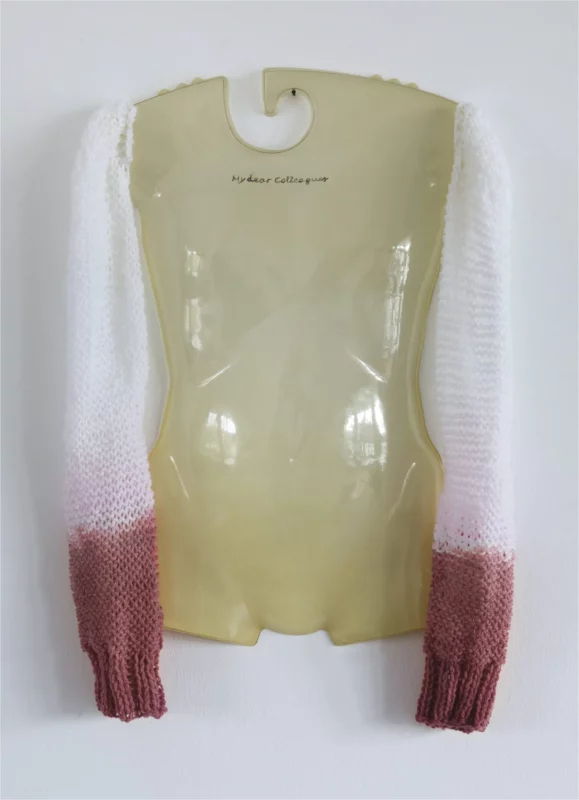“Imagine water up to here,” says Raquel Castedo, reaching above her head, on tiptoe, to place a sign that says “High Water Mark” on the side of a Baltimore rowhouse. Castedo, a Brazilian-born Baltimorean designer and BmoreArt’s Creative Director, had to worry from afar as her home state of Rio Grande do Sul suffered from unprecedented floods this past May.
On May 2, Castedo got a call from her parents in her hometown of Porto Alegre, Brazil, a city of two million people flanking the Guaíba Lake. The heavy rains had started on April 27, and each day the flooding was getting exponentially worse. Her parents, in their late 70s, informed Castedo that they would need to leave their primary residence on May 6 and head northeast to stay in Capão da Canoa where the intensifying weather conditions were not as severe.
May was the month with the highest volume of rainfall in the history of Porto Alegre. The amount surpassed all historical records, with the capital of Rio Grande do Sul receiving 44% of the annual average rainfall in thirty days. The total rainfall was not only a record for the month of May but also made it the rainiest month since measurements began in the capital 124 years ago.
Castedo lived in Porto Alegre for thirty-five years before moving to Baltimore in 2018. As a child, she remembers seeing more rain during the cold months, especially in July (the seasons in the Southern Hemisphere are the opposite of those in the Northern Hemisphere), but in the last decade things changed drastically as floods started to occur more frequently in neighboring cities, the amount of rain unprecedented.
Água até Aqui @aguaateaqui (High Water Mark) is an initiative that aims to be a visual alert for the extreme consequences of the climate crisis currently in south Brazil but applicable everywhere. The campaign Água até Aqui was launched on social media by a group of communication professionals in Brazil two weeks after the floods began. Initially, signs were placed in São Paulo, and soon afterward, residents in other Brazilian cities, including Rio de Janeiro, Curitiba, and Brasília, joined in. As the water is now receding in Porto Alegre, many have continued to use these signs to remember the peak level of the floodwaters.

